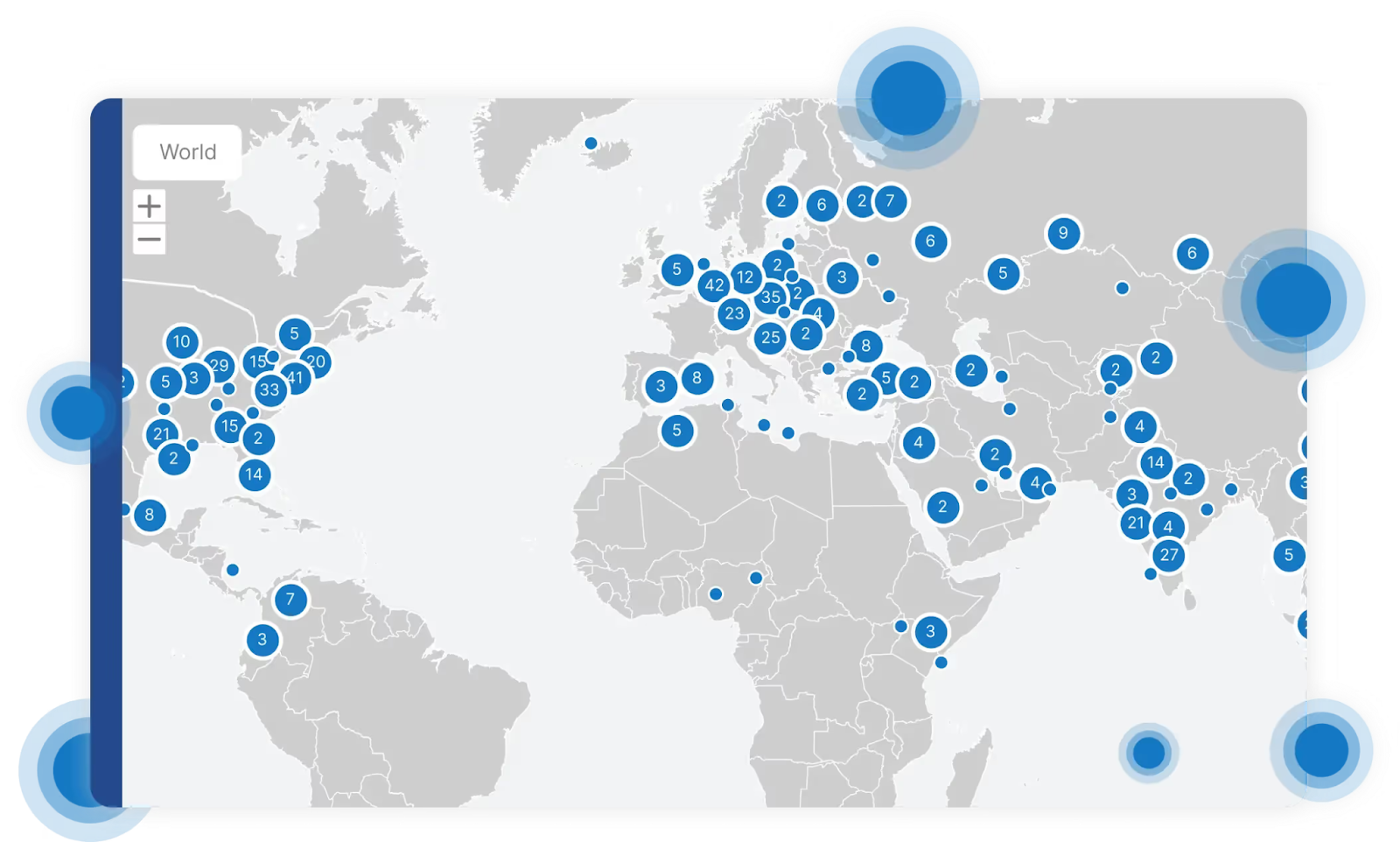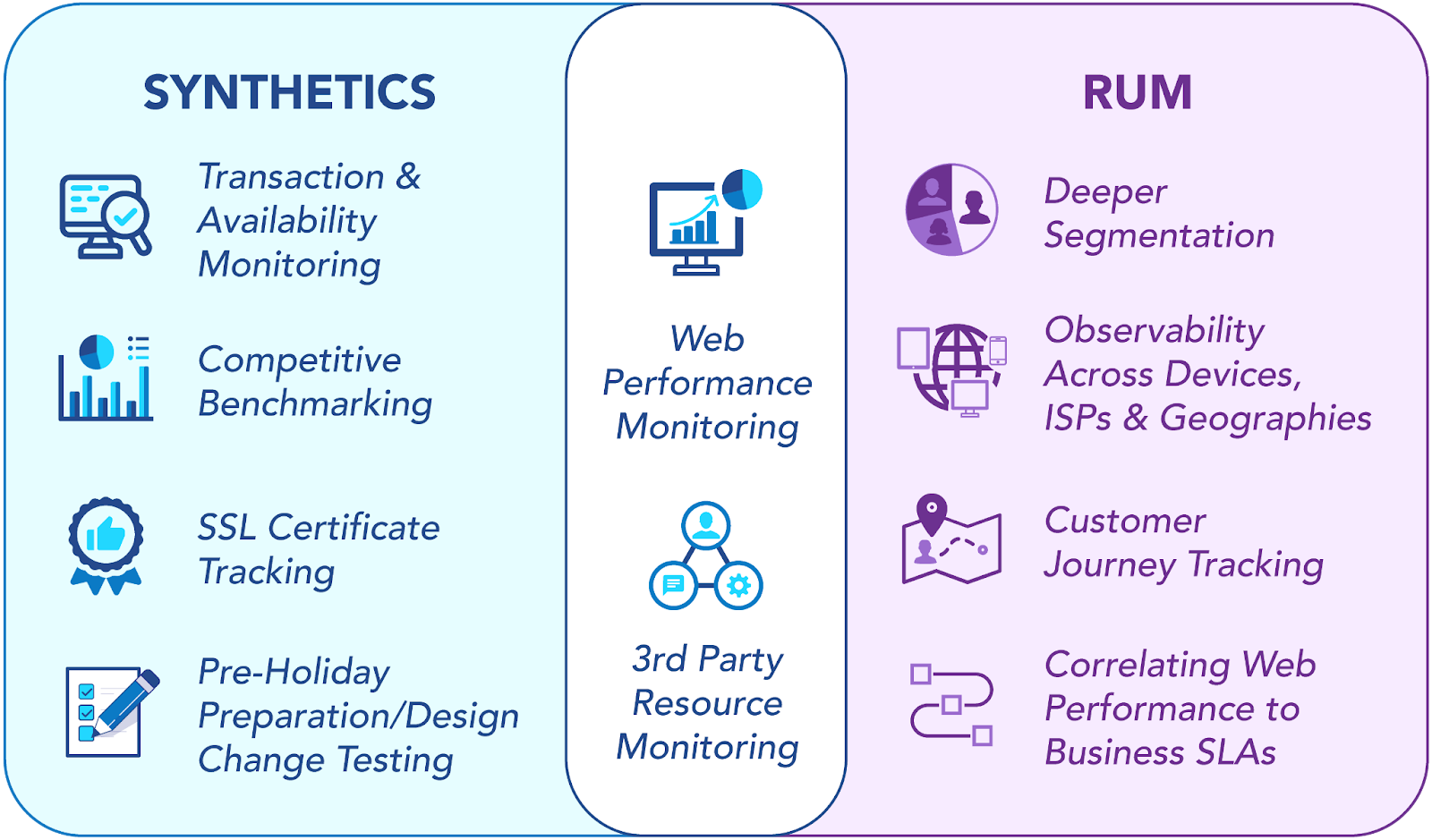In this digital era, a business’s website is the most important interface through which a company interacts with its customers. Whether it is an e-commerce platform, a SaaS dashboard, or a content-rich corporate site, the availability, performance, and reliability of websites are non-negotiable.
Website monitoring is a vital component of business strategy for ensuring uptime and performance. By tracking availability, speed, and user experience, organizations can proactively deal with issues before they extensively impact their user base. Among the various monitoring strategies, synthetic website monitoring is vital due to its proactive and highly customizable nature.
Synthetic website monitoring simulates real website user interactions, including logging in, browsing, submitting information, and completing transactions. These simulated interactions are periodically generated from various worldwide locations using a global network of intelligent agents, provided by organisations like Catchpoint. The result is continuous performance validation, early detection of unusual or undesirable behavior, and round-the-clock testing even in the absence of real user traffic.
This article explores the implementation of synthetic website monitoring, along with key best practices, practical tips, and common pitfalls to avoid.
Summary of key synthetic website monitoring concepts
Synthetic website monitoring overview
Synthetic monitoring simulates real user traffic and behavior on a network to evaluate the ability of a network to support and correctly respond to traffic. Similarly, synthetic website monitoring tests and validates website performance using simulated user interactions with the website. It is achieved using specialized automated scripts that generate user interactions such as website views, form submissions, transactions, and other online activities.
Synthetic website monitoring is an integral part of a broader internet performance monitoring (IPM) strategy that includes real user monitoring (RUM) as well as a wide range of other internet infrastructure monitoring techniques, all of which leverage a worldwide network of intelligent agents.
RUM observes actual users in real time. In contrast, synthetic monitoring operates in a controlled and predictable environment. It is ideal for catching and resolving problems before real users experience them.
Synthetic website monitoring strategies
Synthetic website monitoring strategies include the following.
Simulate real user journeys
While basic uptime evaluates a website's reachability, it doesn’t paint the whole picture. Real user journeys involve multi-step processes and interactions, like logging in, adding products to a cart, searching for content, completing checkouts, and consuming media of all types. These interactive flows must be tested as a whole to ensure the end-to-end experience works smoothly. Thus, not only will the technical aspects of the website be evaluated, but also the user experience, which is the ultimate metric.
Catchpoint Recorder is a Chrome extension that allows you to capture, automate, and replay multi-step transactions to replicate complex interactions and monitor them continuously. You get a more granular set of insights and the ability to identify issues that would otherwise go undetected by simpler, more basic health checks.
Monitor from diverse locations
Synthetic website monitoring must take place from a broad set of global locations, including last-mile, broadband, and mobile endpoints. Businesses with a global user base require a worldwide website performance evaluation. For example, users in Tokyo may experience a website much differently than users in Toronto due to differing routing conditions, CDN edge behavior, or ISP-specific congestion. Explore Catchpoint’s banking website benchmark report to learn more about how geographic CDN distribution affects performance.
Catchpoint’s network of intelligent agents is an excellent example of a service deployed across thousands of strategic points that offers visibility not only in the cloud core but also from actual user vantage points around the world.

Define meaningful thresholds
Monitoring systems are only as good as the metrics they measure. Because of the complexities involved in synthetic website monitoring, thresholds should be set with care. Not all response time spikes or brief outages are critical. However, without well-defined thresholds, network administration teams may either overreact to non-issues or underreact to severe degradations.
To define meaningful thresholds, they should be:
- Tied to specific Service Level Agreements (SLAs), such as homepage loading must be under 2 seconds, 95% of the time
- Adapted to take into account user expectations and device and network diversity.
- Content aware, as different pages with different content may have different performance baselines.
These thresholds must be tuned and dialed in to appropriate levels to minimize noise while preserving responsiveness. This helps support teams to react swiftly without burning out.
Catchpoint’s XLO (experience level objective) framework attempts to achieve this balance. Going beyond simple SLAs to track performance, XLO strives to align thresholds more closely with real user expectations rather than with dry numbers and statistics.
Bridge the gap with RUM
Synthetic website monitoring is an excellent way to observe a website’s behavior under various circumstances that are not commonly observed under normal operations. Because it is highly controlled, even some of the most unusual network and activity load variations and distributions can be reproduced and tested.
Having said that, it is important to note that real user monitoring (RUM) complements synthetic testing by observing how actual users experience the website under varying conditions, providing a more complete website monitoring picture. By combining synthetic website monitoring with RUM, you can:
- Compare expected vs. real performance
- Validate test scripts with production behavior
- Detect anomalies that scripts might miss
Catchpoint enables seamless integration of these data sources in AI-powered smartboards, creating a holistic performance monitoring ecosystem.

Synthetic website monitoring metrics
Detailed metrics captured during each synthetic test provide invaluable insight, pinpointing where delays occur, what elements slow down transactions, and how users may experience a website across multiple browsers, devices, and network locations.
The following are some of the most important performance and reliability metrics that synthetic website monitoring should focus on. Every organisation must determine which ones matter most based on its requirements.
Core timing metrics
- Page load time - the time it takes for the page to fully load, including resources
- DNS lookup time - the time it takes to resolve a domain name into an IP address
- Time to first byte (TTFB) - the time between the request and the arrival of the first byte of the response
- Start render/First contentful paint (FCP) - the time until the first visible content appears.
- Time to interactive (TTI) - when the page becomes fully usable, not just visible
- Speed index - a calculated score that indicates how quickly page content is populated
Web vitals and user experience metrics
- Largest contentful paint (LCP) measures the load speed of the most significant element.
- Cumulative layout shift (CLS) measures visible stability during load.
- Total blocking time (TBT) measures how long the web page is unresponsive to user input between FCP and TTI.
- Error rate is the percentage of failed steps, such as login failures or JavaScript errors.
- Page weight is the total size of the page and its resources.
Transaction and flow-specific metrics:
- Step duration - time taken for each step in a user’s journey.
- Redirect time - time lost due to redirects.
- Third-party resource impact - contribution of time and load from external content.
These metrics can be observed and analyzed at various levels of detail depending on the requirements of the particular website in question. They provide a much more detailed picture of website performance and should be leveraged accordingly.
Recommendations and best practices
Best practices for the implementation of synthetic website monitoring are given below.
Automate key user flows early
When generating synthetic user activities, start with the most critical user paths, such as login, checkout, and content search, and build out scripts from there.
Match frequency to business impact
Critical services and high-traffic pages should be tested more often, say every minute. In contrast, those with low priority can be tested on an hourly basis.
Review thresholds regularly
Because user behaviors can change depending on new products or website design changes, SLAs should be reviewed regularly to refine thresholds.
Prioritize alerts
Using a tagging system and meaningful classification, teams can quickly distinguish between warnings and emergencies, allowing them to respond appropriately to various alerts.
Integrate broadly
Synthetic website monitoring is only a part of a broader observability stack that should be incorporated into a business’s Internet performance monitoring strategy.
Last thoughts
For those businesses that rely heavily on a website for their success, synthetic website monitoring is no longer a “nice to have” feature. It must become a cornerstone of their performance monitoring strategy for digital reliability. When implemented with a robust IPM platform like Catchpoint, trusted by the world’s leading e-commerce, cloud, and CDN providers, synthetic website monitoring becomes more than a testing tool. It becomes a strategic component for delivering exceptional digital experiences for every user, everywhere.